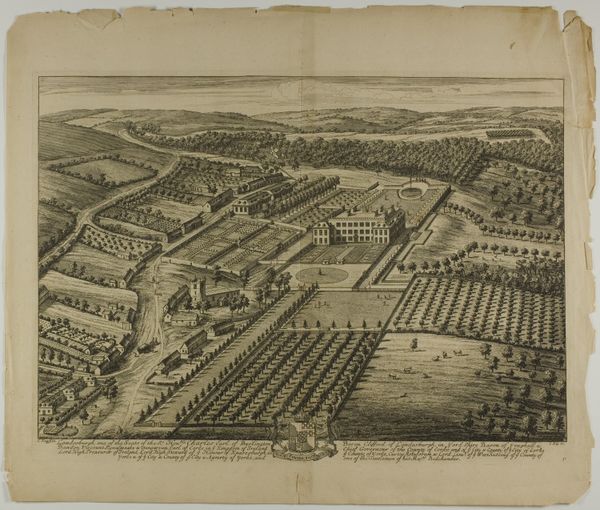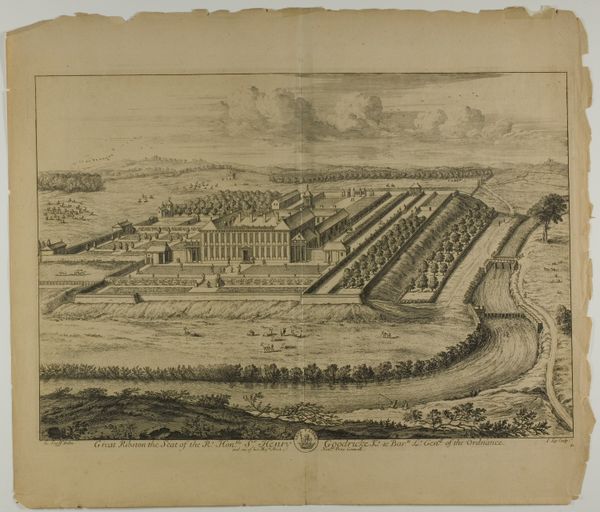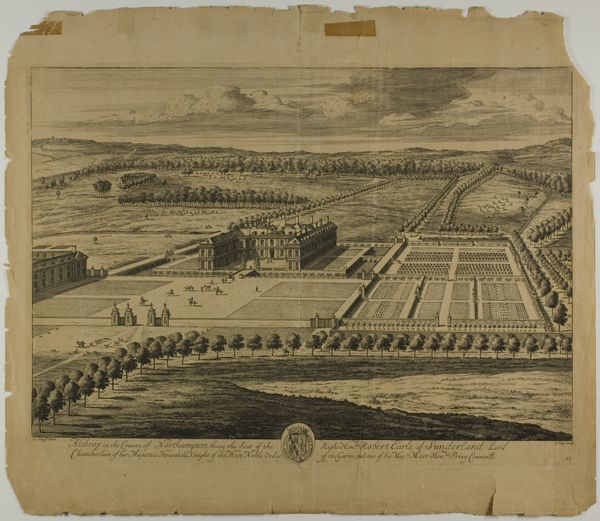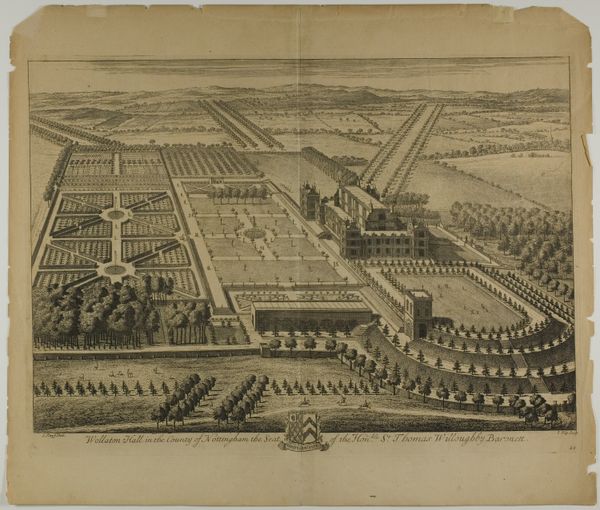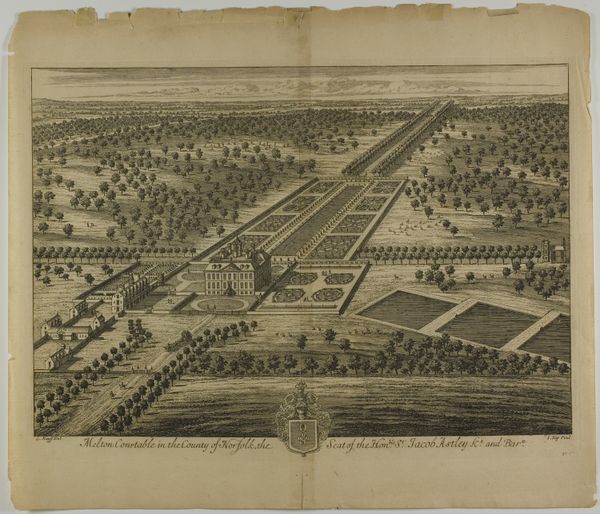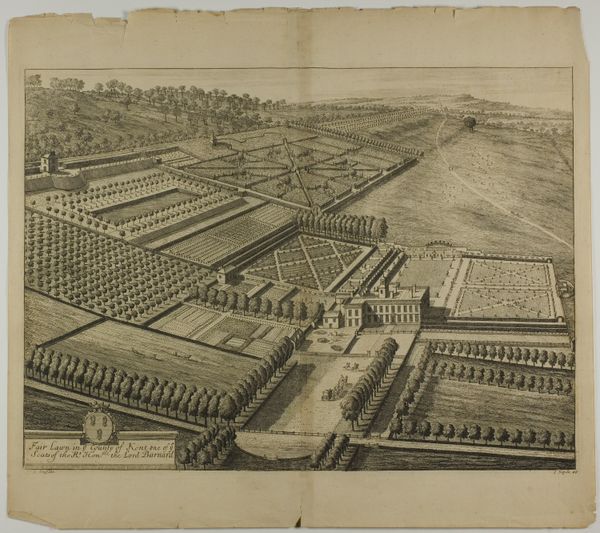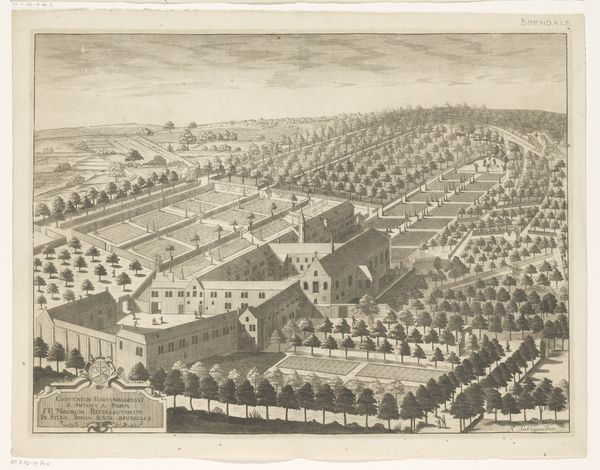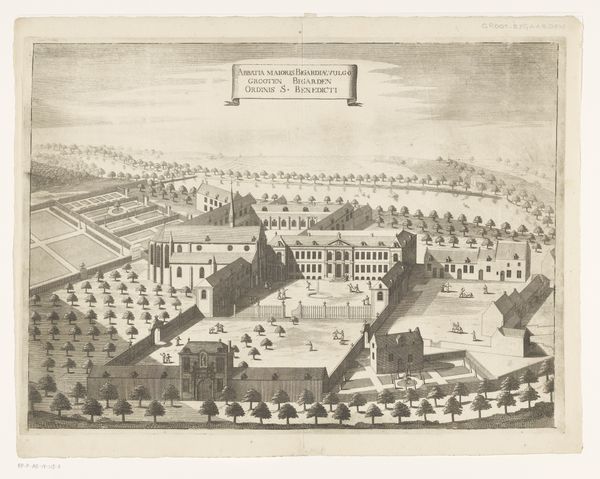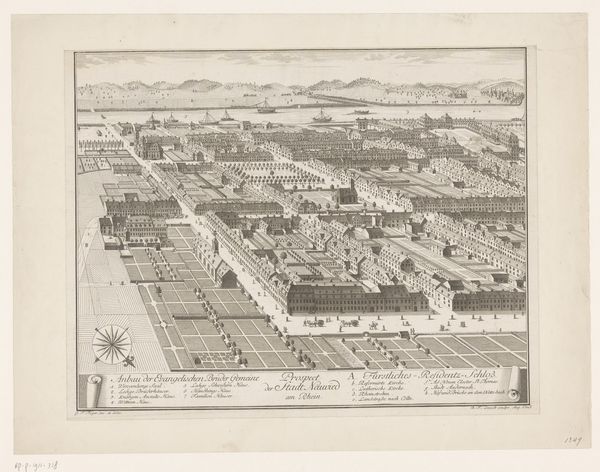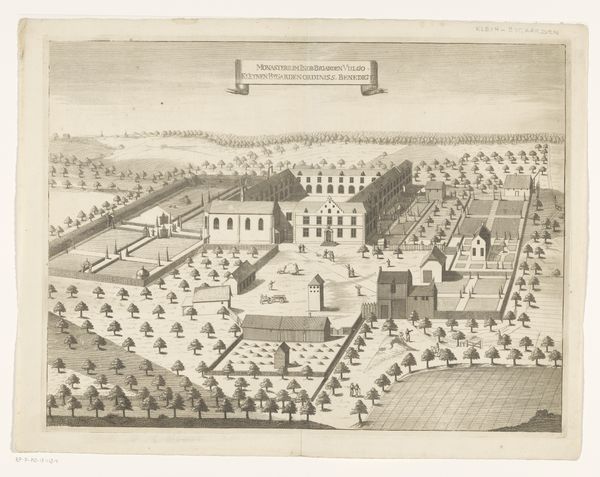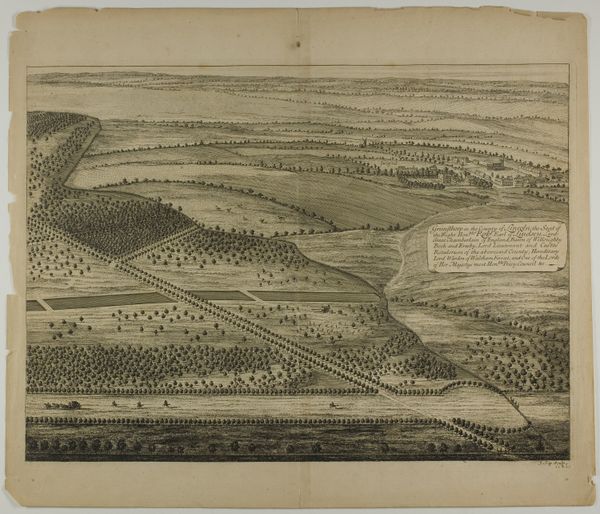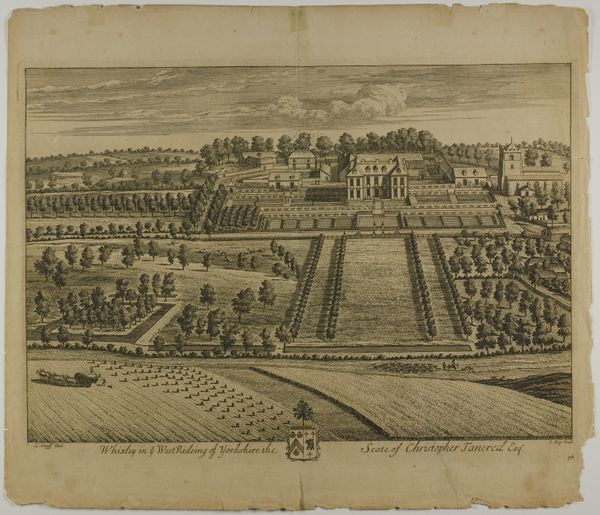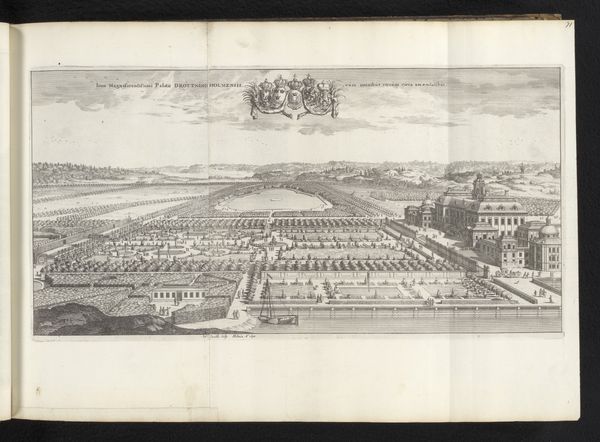
Knowle in the Parish of Sevenoaks in Kent, plate 24 from Britannia Illustrata Possibly 1707
0:00
0:00
drawing, print, etching, paper, engraving
#
drawing
# print
#
etching
#
landscape
#
etching
#
perspective
#
paper
#
cityscape
#
history-painting
#
academic-art
#
decorative-art
#
engraving
Dimensions: 324 × 475 mm (image); 350 × 485 mm (plate); 444 × 500 mm (sheet)
Copyright: Public Domain
Curator: Here we have Johannes Kip’s "Knowle in the Parish of Sevenoaks in Kent, plate 24 from Britannia Illustrata," likely from 1707, now residing at The Art Institute of Chicago. It's an etching, capturing a bird's-eye perspective of a sprawling estate. Editor: My first thought? Wow, what a view! I feel like I’m soaring above, but there is something cold and mathematical about it too, almost like an architectural diagram of landed power. Curator: Indeed. These Britannia Illustrata plates served as visual representations of British power and nobility. We see Knowle, a manor house, meticulously rendered with its gardens, outbuildings, and surrounding landscape. The sharp perspective showcases ownership and control. Editor: Absolutely, it's about projecting authority. Check out how rigid the trees are—like they're standing in line ready for inspection! The social commentary practically screams through that perfect order, while it seems more alive towards the horizon. I can see farm animals grazing, but do common people exist in this version of Knowle? Curator: It raises important questions about representation and visibility. Whose stories are being told—and whose are being left out? We might interpret Kip's precise engraving as a conscious omission, reinforcing class divisions by focusing on the elite's domain, but also how Kip made the composition attractive and inviting. Editor: You know, it's funny how the very act of showcasing something so grand and orderly, unintentionally also displays such exclusion. Like a beautiful bird trapped in a golden cage—beautiful, but limited and defined by class, resources and status. Curator: And it prompts us to examine the history of Knowle through a broader lens, considering those who labored on the land and within the house. It invites conversations around labor, inequality, and the complex legacy of Britain's stately homes. Editor: A grand view hiding grand stories! It is also funny to realize that in those times you would rarely get this wide perspective, because access to observation platforms was almost non-existent. In a way, this piece documents something unseen for most people at the time, so I like the access to this place that it grants. Curator: I find that observation really poignant, and it speaks to why interrogating these seemingly straightforward depictions is crucial, and I agree on its value. Editor: For me, these types of works illustrate how art can document class tension in unintended ways!
Comments
No comments
Be the first to comment and join the conversation on the ultimate creative platform.
